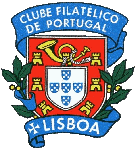 |
| Set of stamps |
 |
| Stamps brochure |
The Portuguese popular festivities include
religious and secular aspects, breaking the everyday life and attracting
participants and spectators from various corners of the country and abroad. The
Espírito Santo festivities in the Azores are the most notorious ex-libris of
the archipelago. With dates set between Easter Sunday and Pentecost, today they
go on until the summer, when the emigrants return “home” to fulfill their
promises and be the “emperors” of the festivities. As such, (s)he must offer
the calves and heifers used in the confection of the “Espírito Santo soups”.
The “roscas” (ringlets) and sweet bread are part of the processions, which,
decorated with flowers and plants, are offered as “bodos” (distribution of
bread, meat and wine). The highlight of the festival focuses on the coronation
of the emperor or empress, during the solemn Mass, followed by the procession,
which highlights lavish decorative elements such as the scepter, crown and
doves alluding to the “Divino Espirito Santo” (Divine Holy Spirit). The
processions were traditionally accompanied by the “folias” (small musical
groups), nowadays sometimes replaced by brass bands. The vitality of these
festivities is equalled only by the glow they gain in areas where Azorean
emigrants live, such as Brazil, the United States and Canada. The festivities
in honor of Santo António of Lisbon, patron of the city, attract thousands of
people. On the night of the 12th to the 13th
of June, Mouraria, Madragoa and Alfama become a huge fairground, with its decorations, singing, dancing and stalls selling food and drink. On one hand, the old fires have now practically disappeared, whilst on the other, the “tronos” (altars) and the sale of basil vases are still present in every corner. In honor of the saint, the famous popular marches take place, in which the various districts compete for the prize for the best march. As matchmaking saint, under his auspices the weddings of Santo António are held, resumed in 1997. The Feira da Golegã, held in an area famous for its cattle, was for centuries known as the Feira de São Martinho, having changed its name in 1972 to Feira Nacional do Cavalo (International Horse Fair). Its reputation as the most important fair of its kind worldwide attracts breeders of the best purebreds. Saint Martin’s Day is the day of public horse-riding performances. The tribute to the horse includes exhibitions, carriage marathons, equestrian games, contests, rallies and raids. Doing justice to the popular adage “On Saint Martin’s, taste the new wine”, the festive atmosphere linked to the fair includes wine tasting, piquette and roasted chestnuts.
The Carnaval de Ílhavo is known for its exacerbation of allowed licentiousness, characteristic of the carnival cycle. The initiatory group of boys who worship the “santo” (barrel of wine), in the procession that travels through the streets of the village, incorporates the violation of borders between male and female, as reflected in the way they masquerade: the delicacy of lace and embroidery of women’s underwear contrasts with the male sexuality mirrored in their huge red noses, sharp and phallic, and in the act of “teaselling” girls, rubbing their nose, or “teasel”, on them in a game of strong erotic sense.
of June, Mouraria, Madragoa and Alfama become a huge fairground, with its decorations, singing, dancing and stalls selling food and drink. On one hand, the old fires have now practically disappeared, whilst on the other, the “tronos” (altars) and the sale of basil vases are still present in every corner. In honor of the saint, the famous popular marches take place, in which the various districts compete for the prize for the best march. As matchmaking saint, under his auspices the weddings of Santo António are held, resumed in 1997. The Feira da Golegã, held in an area famous for its cattle, was for centuries known as the Feira de São Martinho, having changed its name in 1972 to Feira Nacional do Cavalo (International Horse Fair). Its reputation as the most important fair of its kind worldwide attracts breeders of the best purebreds. Saint Martin’s Day is the day of public horse-riding performances. The tribute to the horse includes exhibitions, carriage marathons, equestrian games, contests, rallies and raids. Doing justice to the popular adage “On Saint Martin’s, taste the new wine”, the festive atmosphere linked to the fair includes wine tasting, piquette and roasted chestnuts.
The Carnaval de Ílhavo is known for its exacerbation of allowed licentiousness, characteristic of the carnival cycle. The initiatory group of boys who worship the “santo” (barrel of wine), in the procession that travels through the streets of the village, incorporates the violation of borders between male and female, as reflected in the way they masquerade: the delicacy of lace and embroidery of women’s underwear contrasts with the male sexuality mirrored in their huge red noses, sharp and phallic, and in the act of “teaselling” girls, rubbing their nose, or “teasel”, on them in a game of strong erotic sense.
Technical Details
Date of Issue: 20 July 2012
Values: stamps of 0,05€, 0,32€, 0,47€, 0.68€ and
0,80€
Designer: Atelier Whitestudio
Printer: INCM
Process: Offset
Size: 30,6 x 27,7 mm
Perforation: Cross of Christ 13 x 13
Paper: FSC 110 g/m2
Watermark:
Sheet: with 50 stamps

























.png)






































No comments:
Post a Comment